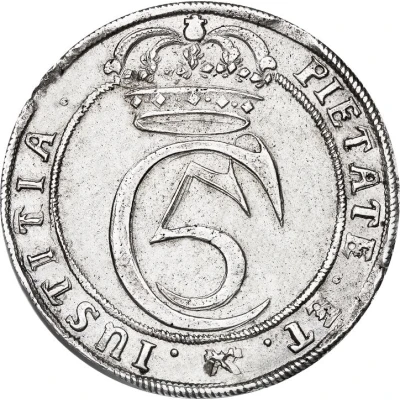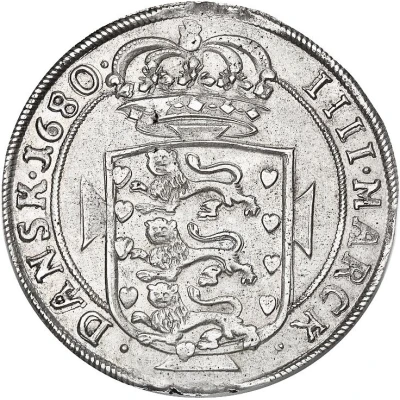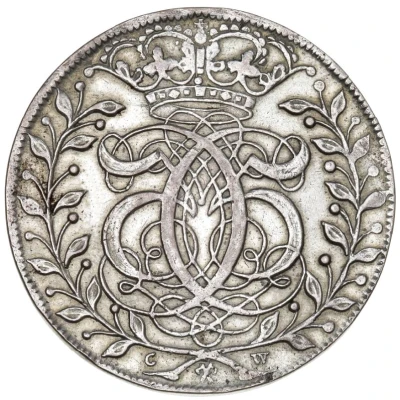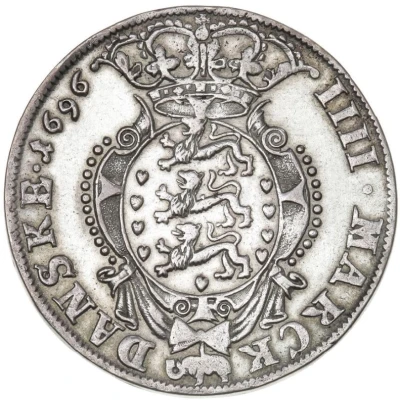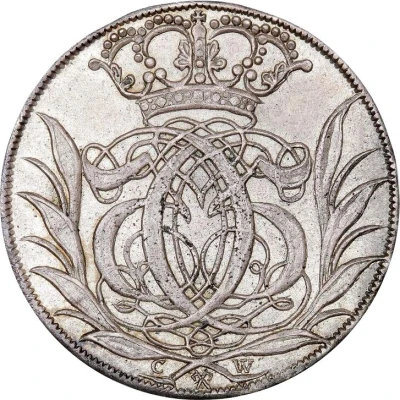
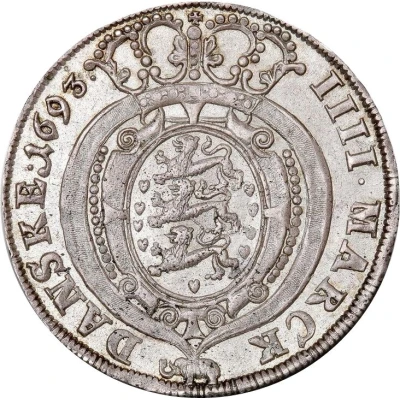

© Stack's Bowers
4 Mark Dansk - Christian V Type II; palm leaves
| Silver (.671) | 22.272 g | 40 mm |
| Issuer | Denmark |
|---|---|
| King | Christian V (1670-1699) |
| Type | Standard circulation coin |
| Years | 1692-1694 |
| Value | 4 Mark Danske = 1 Krone (⅔) |
| Currency | Glückstadt - Speciedaler (1617-1773) |
| Composition | Silver (.671) |
| Weight | 22.272 g |
| Diameter | 40 mm |
| Shape | Round |
| Demonetized | Yes |
| Updated | 2024-10-04 |
| Numista | N#108760 |
|---|---|
| Rarity index | 88% |
Reverse
Crowned and ornate oval shield with arms of Denmark lying on cross. Shield is surrounded by a string with the pendant of the Order of the Elephant. Value in letter at both sides of shield, along the rim. The date may be at the end of the legend (km# 77.1) or also at both sides of the pendant as for the 2 Mark coin (km# 77.2)
Script: Latin
Lettering: IIII • MARCK DANSKE • 1693 •
Comment
Of this coin exists two main variant accordingly to the position of the date on reverse:km# 77.1 - DAV# 3679 with date after value
km# 77.2 - DAV# 3679A with date divided by the pendant of the Elephant.
Also other small variants can be recognized:
1692 has a lot of small dots at sides of shield. On obverse the palm leaves are shorter but the crown is larger than other dates.
1693 Type 1 has few and bigger dots at sides of shield. On obverse the palm leaves are longer and thicker.
1693 Type 2 on reverse has small dots as 1692 but the belt with the pendant is much more wide and touches the crown ring above the shield. Obverse is like type1
1694 looks quite like 1693 type 1
Interesting fact
The 4 Mark Dansk coin featuring Christian V (Type II; palm leaves) was minted during a time of significant economic change in Denmark. The country was transitioning from a feudal society to a mercantile society, and the coinage of the time reflects this shift. The coin's design, which features a portrait of the king surrounded by palm leaves, was meant to symbolize the king's power and influence. Additionally, the use of silver in the coin's minting was a deliberate choice, as it was a valuable and widely traded metal at the time. Overall, this coin offers a fascinating glimpse into the economic and political climate of 17th-century Denmark.
